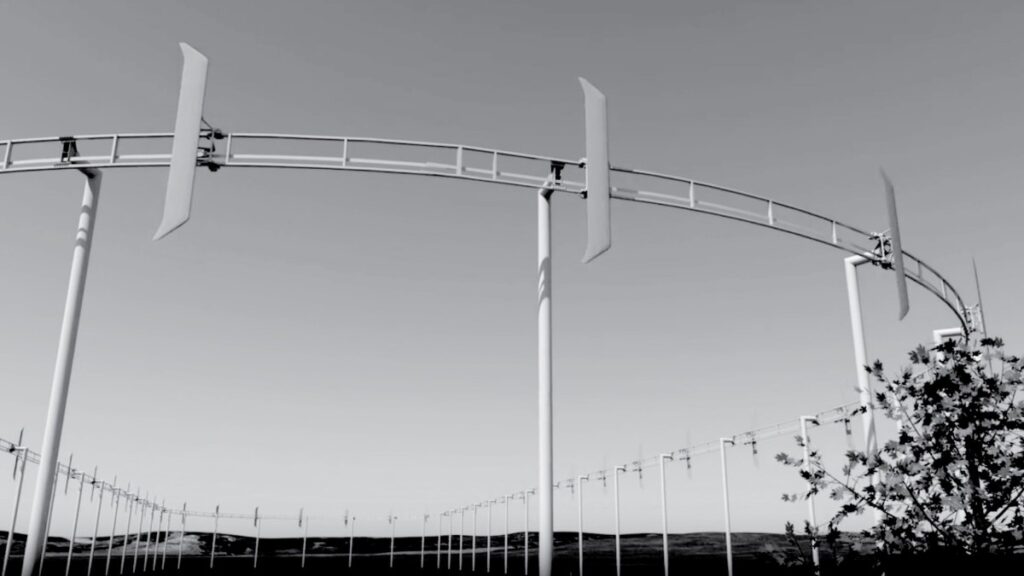Wind power has run into some headwinds, and not the kind that spin its turbines.
Recently, President Trump has decided to wage war against the technology, an unwelcome bit of friction that coincides with rising costs in recent years. Onshore wind power went for $61 per megawatt-hour last year, according to Lazard, bucking a decade-long downward trend.
“We have a lot of headwinds,” acknowledges Neal Rickner, CEO of wind startup AirLoom Energy. But he also argues that his company, which takes a different tack, could emerge a winner if it can weather the next five years.
“People are feeling the pain of $60 megawatt-hour pricing already,” he said. “Our modeling shows we can do that with a first-of-a-kind system. If we can be cost competitive at very low volume with our first system, that’s an indicator of where we can go. We think disruptively low — even without subsidy.”
Most wind turbines look like space-age pinwheels, their blades sweeping a large circle. AirLoom takes that classic turbine concept and deconstructs it. The startup swaps three long blades for an arbitrary number of much shorter ones, attaching them to a cable that runs along an oval track that can be as long or short as desired. The total height of the system is about 60 feet, far shorter than a typical wind turbine.
To prove that it can generate as much power as those tall boys, AirLoom broke ground on its pilot site northwest of Laramie, Wyoming, on Wednesday, the company exclusively told TechCrunch.
“We’ve got it all in the simulation. Now we gotta go build it,” Rickner said.
The pilot system will generate around 150 kilowatts of electricity, though its parts will be the same as those in a megawatt-scale installation. The only difference, he said, is that the track will be shorter in the pilot — about the size of a high school running track with 100-meter straights. A future 3-megawatt system will have 500-meter straights.
The space between the tracks can be used for solar panels or traditional farming — the blades are designed to allow farm equipment to easily pass beneath them.
Rickner said that AirLoom is looking to deploy its first commercial-scale system in 2027 or 2028, a year or two later than he originally predicted in 2023. The first site could be a data center or a military base, he said.
AirLoom has always been targeting the military as a possible customer — no surprise given Rickner’s background as an F/A-18 pilot for the U.S. Marine Corps — but more recently, the company has been talking with data center developers. Many of them, Rickner said, have been struggling to secure wind turbines before 2030.
“What we’re showing is that we can deploy a system in ’27, ’28. It’ll be an early-stage system, but I can get you those early-stage systems sooner. And then I can be on my third iteration of the AirLoom system by 2030,” Rickner said. That, he added, “got the attention of several of those developers.”

